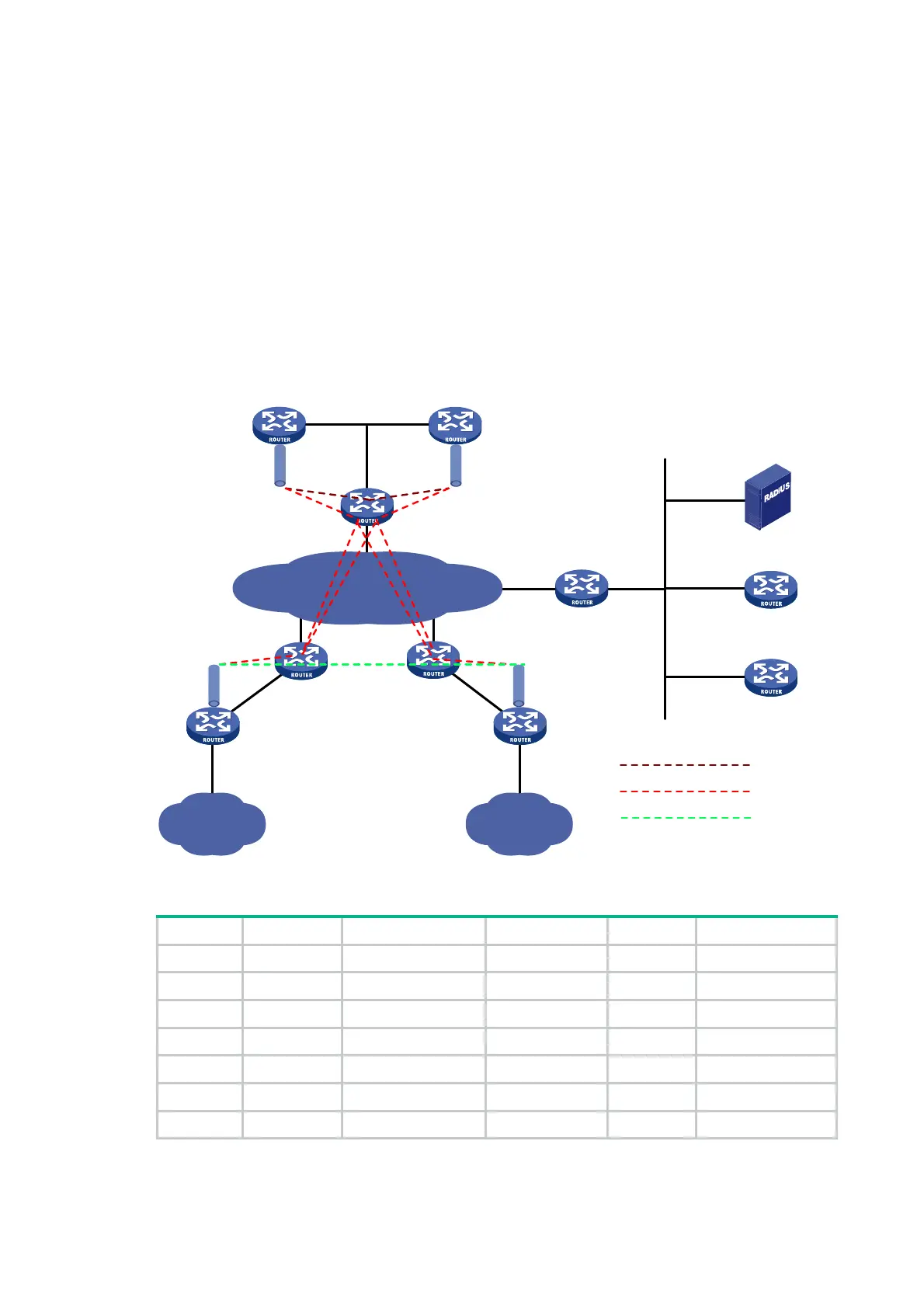432
The output shows that Spoke 3 has established a permanent hub-spoke tunnel to Hub 3.
IPv4 full-mesh NAT traversal ADVPN configuration example
Network requirements
As shown in Figure 154, all the VAM servers and VAM clients reside behind a NAT gateway. The
primary and secondary VAM servers manage and maintain VAM client information for all hubs and
spokes. The AAA server performs authentication and accounting for VAM clients. The two hubs back
up each other, and perform data forwarding and route exchange.
• Establish a permanent ADVPN tunnel between each spoke and each hub.
• Establish a temporary ADVPN tunnel dynamically between the two spokes in the same ADVPN
domain.
Figure 154 Network diagram
Table 18 Interface and IP address assignment
Device Interface IP address Device Interface IP address
Hub 1 GE2/0/1 10.0.0.2/24 Spoke 1 GE2/0/1 10.0.0.2/24
Tunnel1 192.168.0.1/24 GE2/0/2 192.168.1.1/24
Hub 2 GE2/0/1 10.0.0.3/24 Tunnel1 192.168.0.3/24
Tunnel1 192.168.0.2/24 Spoke 2 GE2/0/1 10.0.0.2/24
NAT1 GE2/0/1 1.0.0.1/24 GE2/0/2 192.168.2.1/24
GE2/0/2 10.0.0.1/24 Tunnel1 192.168.0.4/24
NAT2 GE2/0/1 1.0.0.2/24 NAT4 GE2/0/1 1.0.0.4/24
Spoke1 Spoke2
GE2/0/1
Site 1
Site 2
Hub1 Hub2
GE2/0/1
GE2/0/1 GE2/0/1
Tunnel1
Tunnel1
Tunnel1 Tunnel1
GE2/0/2 GE2/0/2
Primary server
Secondary server
AAA server
GE2/0/1
GE2/0/1
GE2/0/1
GE2/0/1
GE2/0/1GE2/0/1
GE2/0/2
GE2/0/2
GE2/0/2
GE2/0/2
NAT1
NAT2
NAT3
NAT4
Hub-to-Hub static tunnel
Hub-to-Spoke static tunnel
Spoke-to-Spoke dynamic tunnel
IP network

